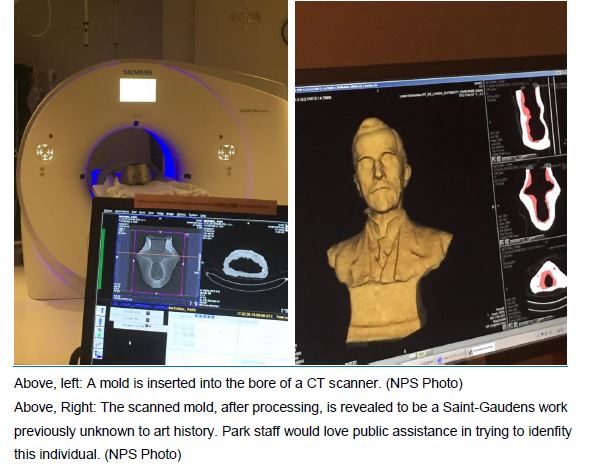More than a century ago, sculptor Augustus Saint-Gaudens and his assistants to sealed shut roughly two dozen sculpture molds. The molds were put into storage for safekeeping.
Since then, the molds have passed from the Saint-Gaudens family to the non-profit Saint-Gaudens Memorial to the National Park Service. They also survived a catastrophic studio fire in 1944. Through the years, the identities of many of these sealed molds had been lost. Until now.
The National Park Service at Saint-Gaudens National Historic Site in Cornish and the Department of Diagnostic Radiology at Dartmouth-Hitchcock?s medical center in Lebanon have developed a partnership to non-invasively peek at what these molds contain.
With computed tomography (CT) scanning, normally used for creating an image of the inside of a patient?s body without surgical intervention, radiologists were able to scan the open interior spaces of these molds and then extrapolate the negative space into a positive digital image of what these molds would have been used to cast.
They also took the additional step of converting these CT scans into stereo lithography which have been used to 3-D print casts of these original Saint-Gaudens works.
One of the scanned mold, after processing was found to be a Saint-Gaudens work previously unknown to art history. Park staff would love public assistance in trying to identify this individual.
